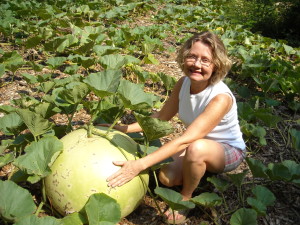Lagenaria siceraria
Introduction & History WHAT IS LAGENARIA SICERARIA?
WHAT IS LAGENARIA SICERARIA?
Lagenaria siceraria is a member of the very large plant family Cucurbitaceae. Some of the more well known members of the Curbit family are melons, pumpkin, cucumber and squash. Within this family is the Lagenaria genera. I will focus on this particular genus as it is the variety of gourd I use for my artwork. The Lagenarius are large fruits that grow on vines with spirally coiled tendrils. Some varieties are edible, but most are unpalatable unless eaten at the small, immature stage. They dry with a hard woody shell and are so durable they have been known to last for thousands of years.
There are four main types of hard shell gourds that artists use today to create their artwork; basket, bottle, dipper and snake. Within each type are many varieties named after their shape characteristics such as canteen, penguin, club and banana.
Hard-shell gourds can be selectively bred to create specific shapes. Growers attempting to reproduce the same size and shape gourd in successive generations will cultivate certain varieties in isolation from other varieties because gourd varieties interbreed so readily, creating new hybrids or variations.
HISTORY OF LAGENARIA SICERARIA
Botanical evidence suggests the gourd species we know today originated in Africa. It is believed that gourds were the first cultivated plants to span the globe. The oldest specimens of gourd fragments were discovered in Peru dating as far back as 23,000-11,000 B.C. Archaeologists even unearthed whole gourds dating from 6000-4000 B.C.
I can think of no other plant that served humans more diversely than the gourd. Ancient civilizations used gourds in all facets of daily life. Gourds were used as utensils, storage containers, musical instruments, clothing, ceremonial vessels, flotation devices, tools, weaponry and food. Gourds were also used for medicinal and healing purposes. In North America, the Martinhouse gourd was used extensively as birdhouses to attract purple martins, which provided bug control for agriculture.
In many cultures, gourds progressed from utilitarian objects to works of art. People embellished gourds with the same materials, patterns and techniques used to adorn other objects in their culture, making it one of the oldest art forms in the world.
Gourds continue to play an important role in many cultures today. They are now being rediscovered by artists as a versatile art medium. Read more about Gourds and Fine Art.
